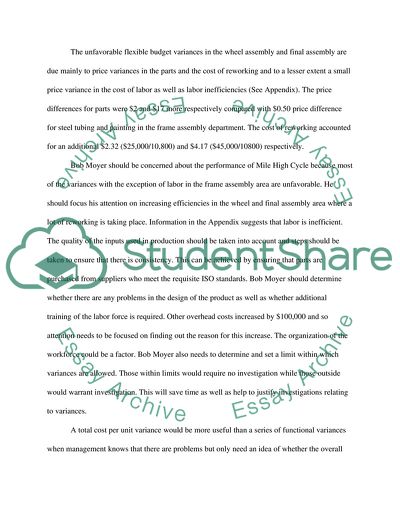Flexible Budgeting and Prime variances( managerial accounting) Case Study. https://studentshare.org/finance-accounting/1777233-flexible-budgeting-and-prime-variances-managerial-accounting
Flexible Budgeting and Prime Variances( Managerial Accounting) Case Study. https://studentshare.org/finance-accounting/1777233-flexible-budgeting-and-prime-variances-managerial-accounting.


